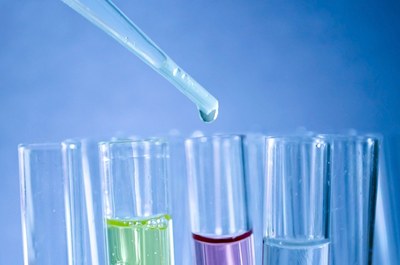Student Projects - NEW PROJECTS
Projects for project work, bachelor and master theses
2. Regulation of tetrapyrrole biosynthesis
Analysis of transgenic plants with deregulated chlorophyll or heme biosynthesis using molecular genetics and biochemical methods.
2.1 In-vivo characterization of the post-translational control of ALA synthesis with glutamyl-tRNA reductase (GluTR) and glutamate-1-semialdehyde aminotransferase (GSAAT).
This work includes the functional characterization of regulatory factors of these enzymes, such as the regulators FLU and GBP, the chaperone cpSRP43, the Clp protease, or the thioredoxins and NTRC for redox control. But the identification of other interaction partners for the control of ALA synthesis is still possible.
See Czarnecki et al., 2011 Plant Cell; Apitz et al., 2016 Plant Physiol; Wang et al., 2018 Proc Natl Acad Sci US A; Richter et al., 2018 Elife; Wang et al., 2019 Nat Commun; Wu et al., 2019 Nat Plant; Ji et al., 2021 Nat Plant.
2.2 Post-translational control in the Mg branch of tetrapyrrole biosynthesis.
This work currently regards analysis of redox control, additional chaperone function of cpSRP43 as well as protein phosphorylation. New post-translational control mechanisms are currently explored after new identified regulators and chaperones, e.g. DnaJ like proteins (CPP1, CPL3), TPR proteins.
See Richter et al., 2016 Plant Cell & Physiol; Richter et al., 2016 Plant Physiol 2016; Ji et al., 2021 Nat Plant.
3. Linking chlorophyll biosynthesis to the incorporation of chlorophyll into photosynthetic proteins in the thylakoid membrane.
Work will continue with LHC-like proteins such as LIL3 and OHPs. We also address the recently identified recycling pathway of chlorophyll. Using co-immunoprecipitation, affinity chromatography, ultracentrifugation, native gel electrophoresis, and mass spectrometry, the interactions of the proteins for chlorophyll biosynthesis and the integration of chlorophyll into the proteins of photosynthesis are demonstrated.
Other sub-projects also deal with other assembly factors and chaperones for the organization of chlorophyll synthesis and the biogenesis of the thylakoid membrane.
See Tanaka et al., 2010, Proc Natl Acad Sci USA; Hey et al., 2018 Plant Physiol; Hey et al., 2017 Plant Physiol; Hey et al., 2020; Lin et al., 2016 Plant Cell.
4. Functional analysis of the two isoforms of ferrochelatase in heme synthesis
5. Localization of enzymes involved in tetrapyrrole synthesis in subcompartments of the plastids
These projects contribute to a better understanding of the organization of chlorophyll and heme synthesis. The location of the individual isoforms of enzymes within the plastids contributes to the elucidation of their function. This clarifies how metabolites are distributed to the synthesis pathways in a branched metabolic pathway: chlorophyll synthesis in the thylakoid membrane, differentiation of heme synthesis for inner and outer plastid heme-dependent proteins.
see Lermontova et al., 1997 Proc Natl Acad Sci US A; Scharfenberg et al., 2015 Plant Cell Environ, Fan et al., 2019 Plant Cell Environ.
6. Analysis of the plant riboflavin (vitamin B2) biosynthetic pathway and FAD/FMN synthesis in plastids and cytoplasm
Analysis of mutants in riboflavin and flavin synthesis. Identification of genes for new enzymes of flavin synthesis and for transporters of riboflavin and flavins.
Biochemical, genetic and mass spectrometric methods are used to distinguish the regulation of the FAD and FMN pathways in plastids and cytoplasm and to analyze the effects of deregulated flavin synthesis on the function of FAD and FMN-dependent enzymes in all cellular compartments.
See Hiltunen et al., 2014, Schall et al., 2020 Int J Mol Sci.
Content is not displayed correctly? Link to our website optimised for mobile devices

